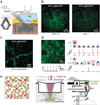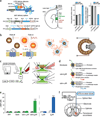Optogenetics: 10 years of microbial opsins in neuroscience
- PMID: 26308982
- PMCID: PMC4790845
- DOI: 10.1038/nn.4091
Optogenetics: 10 years of microbial opsins in neuroscience
Abstract
Over the past 10 years, the development and convergence of microbial opsin engineering, modular genetic methods for cell-type targeting and optical strategies for guiding light through tissue have enabled versatile optical control of defined cells in living systems, defining modern optogenetics. Despite widespread recognition of the importance of spatiotemporally precise causal control over cellular signaling, for nearly the first half (2005-2009) of this 10-year period, as optogenetics was being created, there were difficulties in implementation, few publications and limited biological findings. In contrast, the ensuing years have witnessed a substantial acceleration in the application domain, with the publication of thousands of discoveries and insights into the function of nervous systems and beyond. This Historical Commentary reflects on the scientific landscape of this decade-long transition.
Figures







Comment in
-
Optogenetics and the future of neuroscience.Nat Neurosci. 2015 Sep;18(9):1200-1. doi: 10.1038/nn.4094. Nat Neurosci. 2015. PMID: 26308980
References
-
- Boyden ES, Zhang F, Bamberg E, Nagel G, Deisseroth K. Nat. Neurosci. 2005;8:1263–1268. - PubMed
Publication types
MeSH terms
Substances
Grants and funding
LinkOut - more resources
Full Text Sources
Other Literature Sources
Miscellaneous

